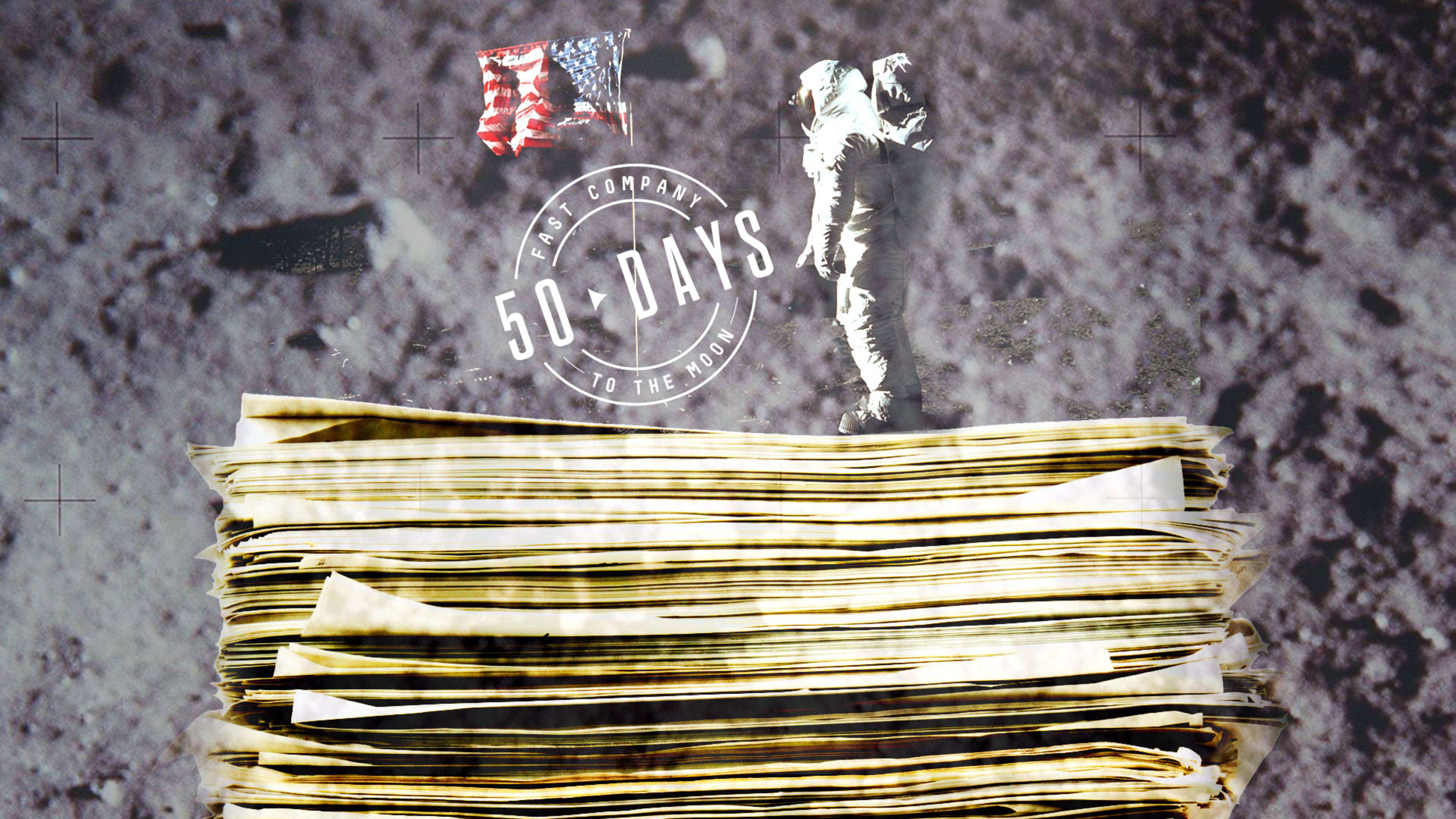This is the 14th in an exclusive series of 50 articles, one published each day until July 20, exploring the 50th anniversary of the first-ever Moon landing. You can check out 50 Days to the Moon here every day.
As internet pioneer and venture capitalist Marc Andreessen wrote in 2011, software is eating the world.
But that wasn’t true during the race to the Moon in the 1960s.
Just the opposite: Software was so new as an idea that the spelling hadn’t even been settled.
Sometimes it was “software,” but just as often, it was “softwear.”
The words “software” and “softwear” were used interchangably in newspaper stories, in headlines, and in advertisements for jobs from such well-established computer companies as Control Data Corporation. The headline of a large advertisement in the St. Louis Post-Dispatch from Control Data Corp., on November 4, 1965, read, “Computer Softwear Professionals,” and went on to list openings in four categories of jobs, including “Softwear Documentation.”
Honeywell, the Minneapolis Star reported on March 7, 1962, had “new softwear under development (that) includes an optical scanner, which can read information for the computer, and a data phone system for communicating with computers.”
“Softwear’s Her Forte,” was the headline on the profile of a female programmer in the Davenport, Iowa, newspaper, the Quad-City Times, on May 24, 1963.
In that interesting moment in the world of computer software, it wasn’t just the spelling that was unsettled. It was completely unclear how to get big, complicated, inter-locking software projects done. What kind of discipline was computer programming anyway? Was it like science? Or math? Like writing? Or engineering?
There were well-established protocols for managing hardware engineering projects—and had been for half a century or more. The U.S. built Hoover Dam in four years (1936), the Pentagon in 16 months (1943), and the Empire State Building rose at a rate of one story a day and was completely finished in 14 months (1931). Not to mention the execution of the Manhattan Project, just part of the vast logistical effort of World War II.
But there were no standardized practices or management systems for big software projects. In fact, when the computer programmers at MIT got started writing the software necessary to fly to the Moon in 1961, there hadn’t been any software development projects of the scale and complexity of Apollo. It was the first of a whole new kind of engineering project. MIT worked for more than a year on computers and software for a spacecraft that didn’t yet exist.
MIT software engineer Margaret Hamilton morning is often credited with popularizing the phrase “software engineering.” Hamilton had graduated from college in 1958, joined the MIT Apollo project in 1963, and by 1969, just 11 years out of college, was overseeing software for the command module. “Software during the early days of (Apollo) was treated like a stepchild and not taken as seriously as other engineering disciplines, such as hardware engineering,” Hamilton said, and that was especially true at an established engineering center like MIT. “It was regarded as an art and as magic, not a science . . . . I began to use the term ‘software engineering’ to distinguish it from hardware and other kinds of engineering.”
The phrase didn’t immediately catch on. “When I first started using this phrase, it was considered to be quite amusing. It was an ongoing joke for a long time.” (The phrase “software engineering” started to appear in computer job ads in 1966.)
That first big software programming project for Apollo at MIT set two precedents.
First, it went wildly over space and over deadline. At one point in 1966, MIT’s coders had written 40% more software than would fit in the computers, and NASA feared that MIT, and the software, would prevent the U.S. from reaching the Moon by the 1969 deadline. That kind of schedule performance has, sadly, characterized big software projects ever since.
But MIT’s software, and the computers it ran on, were also widely regarded as a marvel: Computers with less brainpower than your dishwasher today did a masterful job of navigating spaceships to the Moon and back. In 11 Apollo missions—nine of which flew the to the Moon—there were 2,504 hours of space flight, more than 100 days. There was not one recorded software error or hardware glitch. The performance of the Apollo computers and software in flight was perfect.
That kind of performance, sadly, has not come to characterize software projects back on Earth.
Charles Fishman, who has written for Fast Company since its inception, has spent the last four years researching and writing One Giant Leap, a book about how it took 400,000 people, 20,000 companies, and one federal government to get 27 people to the Moon. (You can order it here.)
For each of the next 50 days, we’ll be posting a new story from Fishman—one you’ve likely never heard before—about the first effort to get to the Moon that illuminates both the historical effort and the current ones. New posts will appear here daily as well as be distributed via Fast Company’s social media. (Follow along at #50DaysToTheMoon).
Recognize your brand’s excellence by applying to this year’s Brands That Matter Awards before the early-rate deadline, May 3.
